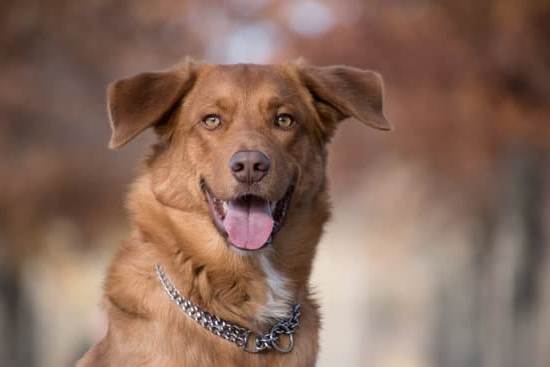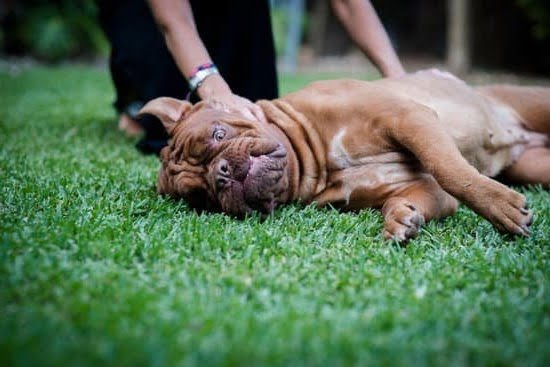Dogs have long been regarded as man’s best friend, but it is their incredible sense of smell that truly sets them apart from other animals. As pet owners, understanding the importance of scent training for our beloved companions is vital. In this article, we will delve into the world of scent training and explore why it is crucial for dogs in various contexts.
The science behind a dog’s incredible sense of smell is fascinating. With an anatomy and physiology specifically designed for detecting scents, a dog’s nose far surpasses what humans can comprehend. We will take a closer look at the intricate structure of a dog’s nose and understand why their scenting abilities are so superior.
Training your dog to search for specific scents brings numerous benefits. Not only does it provide mental stimulation and engage your four-legged friend’s natural instincts, but it also opens up possibilities for their potential use in specialized tasks such as search and rescue operations, narcotics or explosives detection, or even as medical alert dogs. Through scent training, you can provide your dog with a sense of purpose while strengthening the bond between you both.
As we embark on this journey of understanding scent training for dogs, we will explore various aspects such as assessing your dog’s natural abilities and breed-specific predispositions when selecting a scent for training. Furthermore, different popular scents commonly used in dog scent training will be discussed along with considerations for choosing the ideal scent based on factors like your dog’s preferences and motivation.
To help you navigate through the process effectively, we have also included a step-by-step guide to train your dog to search for a specific scent.
Get ready to unlock the secrets behind scent training and equip yourself with valuable knowledge to choose the perfect scent for your furry companion.
The Science Behind a Dog’s Incredible Sense of Smell
Dogs have long been recognized for their exceptional sense of smell, which far surpasses that of humans. This section will explore the anatomy and physiology of a dog’s nose, as well as the reasons why their scenting abilities are so remarkable.
The Anatomy and Physiology of a Dog’s Nose:
A dog’s nose is truly a marvel of biological engineering. They possess about 300 million olfactory receptors in their noses, compared to our mere 6 million. These receptors are responsible for detecting and processing scents. In addition to an abundance of receptors, dogs also have what is known as the vomeronasal organ, or Jacobson’s organ. This specialized organ allows them to detect pheromones – chemical signals that convey information between animals of the same species.
Why Dogs Have Superior Scenting Abilities:
Several factors contribute to a dog’s exceptional sense of smell. Firstly, they have a larger portion of their brains dedicated to analyzing scents compared to humans. Additionally, the air intake and exhalation processes in dogs’ noses are separate, allowing them to continuously sample and analyze scents without interruption. Dogs also possess an extraordinary ability called “olfactory memory,” enabling them to remember specific smells for extended periods.
Understanding these fascinating aspects of a dog’s sense of smell can help us appreciate and harness their incredible scenting abilities. Whether you’re considering training your dog for search and rescue missions or simply want to engage their minds with scent work activities, knowing how dogs process smells can inform your training decisions.
| Statistic | Data |
|---|---|
| Olfactory receptors in a human nose | 6 million |
| Olfactory receptors in a dog’s nose | 300 million |
| Pheromone-detecting organ in dogs | Vomeronasal organ (Jacobson’s organ) |
Benefits of Training Your Dog to Search for Specific Scents
Training your dog to search for specific scents offers a multitude of benefits for both you and your furry companion. Not only does it enhance mental stimulation for your dog, but it also provides a sense of purpose and fulfillment. Additionally, scent-trained dogs have the potential to be highly valuable in various fields such as search and rescue operations, detection of narcotics or explosives, and even as medical alert dogs.
One of the primary benefits of training your dog to search for specific scents is the mental stimulation it provides. Dogs are intelligent animals that need mental exercise just as much as physical activity. Engaging in scent training exercises challenges their cognitive abilities, sharpens their focus, and keeps their minds sharp. When dogs are mentally stimulated through scent work, they often exhibit better behavior overall because they have an outlet for their natural instincts and energy.
Furthermore, scent-trained dogs can fulfill important roles in society. Search and rescue dogs play a crucial role in locating missing persons during emergencies or disasters. Their exceptional olfactory senses enable them to quickly identify human scents and track down individuals even in challenging environments. Additionally, detection dogs trained to find narcotics or explosives are instrumental in law enforcement efforts to maintain public safety.
| Field | Benefit of Scent-Trained Dogs |
|---|---|
| Search and Rescue Operations | Scent-trained dogs can cover large areas in a short time, increasing the chances of finding missing persons. |
| Narcotics/Explosives Detection | Scent-trained dogs help prevent crime by detecting illegal substances or dangerous materials with accuracy. |
| Medical Alert Dogs | Dogs trained to detect specific scents can assist individuals with medical conditions, such as diabetes or epilepsy, by alerting them to potential health emergencies. |
Assessing Your Dog’s Natural Abilities and Breed-Specific Predispositions
When it comes to scent training, it is important to consider your dog’s natural abilities and breed-specific predispositions. Different breeds possess varying levels of scenting capabilities, and understanding these factors will greatly contribute to the success of your training endeavors.
One key factor to consider is the breed of your dog. Some breeds have been specifically bred for their exceptional scenting skills, such as bloodhounds or German shepherds. These breeds often exhibit a strong natural instinct for tracking scents and may excel in certain scent-related tasks like search and rescue missions. On the other hand, breeds like small terriers may have a more independent nature and may require additional motivation during scent training.
Size can also play a role in a dog’s scenting abilities. While all dogs possess an incredible sense of smell, larger dogs generally have more olfactory receptors in their noses, allowing them to detect scents with greater precision. However, smaller breeds can still be highly successful in scent training if given the proper guidance and motivation.
Another important consideration is your dog’s temperament. Some dogs are more naturally focused and have a stronger work drive, making them ideal candidates for advanced scent training tasks like detection work or medical alert training. Other dogs may be easily distracted or have a lower level of motivation, requiring more patience and tailored training techniques.
To assess your dog’s natural abilities and predispositions, start by observing their behavior during walks or playtime. Does your dog frequently sniff the ground or follow scents with enthusiasm? Do they seem curious about different smells? These signs can indicate that your dog has a strong sense of smell and may be well-suited for scent training.
Additionally, consulting with professional trainers or scent detection experts can provide valuable insights into your dog’s potential for scent training success. They can assess your dog’s characteristics and help you determine which scents or tasks would be most appropriate for your furry friend.
By considering your dog’s natural abilities and breed-specific predispositions, you can tailor your scent training program to suit their individual strengths and motivations. This will not only enhance their enjoyment of the training process but also increase the likelihood of successfully harnessing their incredible sense of smell for various scent-related tasks.
Popular Scents for Dog Scent Training
When it comes to training your dog to search for specific scents, there are a variety of options to choose from. Popular scents for dog scent training can include essential oils, herbs, and specific animal scents. The choice of scent will ultimately depend on the task you are preparing your dog for, whether it’s tracking, hunting, or search and rescue missions.
One option for scent training is using essential oils. These oils have concentrated aromatic compounds that can be easily detected by a dog’s sensitive nose. Some commonly used essential oils for scent training include lavender, peppermint, tea tree oil, and eucalyptus. Each oil has its own unique scent profile and can be used to train dogs for various purposes.
Herbs are another popular choice for scent training dogs. Certain herbs have distinct aromas that can be easily recognized by dogs. For example, sage and rosemary have strong scents that can help dogs associate them with specific tasks or objects. By using herbs during scent training exercises, you can enhance your dog’s ability to identify and locate the desired target scent.
In addition to essential oils and herbs, specific animal scents are often used in scent training as well. For example, if you are training your dog for search and rescue missions involving missing persons or disaster scenarios, using human scent pads or articles of clothing can be effective. This allows your dog to learn how to locate and track the specific human scent in real-life situations.
It’s important to note that the choice of scent should be based on the intended task or purpose of the training. Consulting with professional trainers or scent detection experts can provide valuable insights and guidance when selecting an appropriate scent for your dog’s training journey. They can help assess your dog’s natural abilities and breed-specific predispositions to determine which scents are most suitable for their capabilities.
Overall, by choosing the right scents for your dog’s scent training, you can enhance their mental stimulation, provide them with a sense of purpose, and unlock their incredible scenting abilities. Whether you’re training your dog for search and rescue, detection work, or simply for fun and enrichment, selecting the right scent is a crucial step in their training journey.
Choosing the Ideal Scent for Your Dog’s Training Journey
When it comes to scent training for dogs, choosing the right scent is crucial for their success and effectiveness. There are several factors to consider when selecting a scent for your dog’s training journey, as it can greatly impact their motivation and performance. Here are some key factors to keep in mind:
- Dog’s preferences: Each dog has its own unique preferences when it comes to scents. Some may be more motivated by food-related scents, while others may be more interested in natural scents like herbs or animal smells. It’s important to observe your dog’s reactions and behaviors to different scents during initial training sessions.
- Motivation levels: Understanding what motivates your dog is essential in selecting the ideal scent for their training. Dogs can be motivated by various factors such as food rewards, playtime, or praise from their handler. Choose a scent that aligns with what motivates and engages your dog the most during training.
- Task-specific requirements: Consider the specific task or job you are training your dog for. Different tasks may require different scents to be used during training. For example, if you are training a search and rescue dog, scents related to humans or specific objects may be appropriate. On the other hand, if you are training a hunting dog, scents related to game animals like deer or birds might be more suitable.
To make an informed decision about which scent to choose, seeking guidance from professional trainers or scent detection experts can be incredibly helpful. They have experience working with a variety of breeds and can provide tailored recommendations based on your specific goals and needs.
Choosing the ideal scent for your dog’s training journey is a critical step in ensuring their success and effectiveness in scent work tasks. By considering factors such as your dog’s preferences, motivation levels, and task-specific requirements, you can select a scent that will engage and motivate your dog to excel in their training. Seek guidance from experts in the field to make an informed decision and set your dog up for success.
Step-by-Step Guide to Training Your Dog to Search for a Specific Scent
Scent Introduction and Association Exercises
Training your dog to search for a specific scent requires a strong foundation in scent introduction and association. In this step-by-step guide, we will walk you through the process of introducing your dog to the desired scent and creating a positive association with it.
The first step is to choose the scent you want your dog to search for. This could be anything from essential oils, herbs, or specific animal scents depending on the purpose of the training. It’s important to select a scent that is safe for your dog and one that they find motivating.
Start by presenting the chosen scent to your dog while using a command or cue word such as “find it” or “search.” As soon as your dog shows any interest in the scent, reward them with praise or a treat. Repeat this process several times until your dog begins to associate the command or cue word with the scent.
Refining Your Dog’s Scent Discrimination Skills
Once your dog has made a positive association with the desired scent, it’s time to start refining their scent discrimination skills. This involves teaching them how to differentiate between different scents and only respond when they detect the target scent.
Begin by introducing other scents alongside the target scent. Place multiple containers – each containing a different scent – in front of your dog and give them the command or cue word to search for the target scent. When your dog correctly identifies the target scent, reward them with praise and treats.
Gradually increase the difficulty by adding more containers with various scents as well as distractors such as toys or food items. This will help strengthen their ability to discriminate between scents and remain focused on finding the target scent.
As your dog progresses, you can make the search area more challenging by hiding scented objects in different locations, including indoors and outdoors. Remember to always reward your dog for successfully locating the target scent and to provide plenty of positive reinforcement throughout the training process.
By following this step-by-step guide, you can effectively train your dog to search for a specific scent. Remember to be patient, consistent, and adaptable as every dog learns at their own pace. With time and practice, your four-legged friend will become a skilled scent detector ready to take on various tasks.
Troubleshooting Common Challenges in Scent Training
Addressing Distractions
One of the common challenges in scent training is dealing with distractions that can divert your dog’s attention away from the target scent. Dogs have a natural curiosity and may get easily distracted by other smells, noises, or movements in their environment. To address this challenge, it is important to gradually introduce distractions during the training process.
Start in a controlled environment with minimal distractions, and slowly increase the level of distractions as your dog becomes more proficient in scent detection. Use positive reinforcement techniques like rewards and praise to keep your dog focused on the target scent, even in the presence of distractions.
Dealing with False Alerts
Another hurdle you might encounter in scent training is false alerts. A false alert occurs when your dog indicates that they have found the target scent when it is not actually present. This can be frustrating for both you and your dog.
To minimize false alerts, it is crucial to establish clear criteria for what constitutes a successful indication. Consistency is key here – ensure that you provide consistent rewards only when your dog correctly identifies the target scent. If false alerts continue to occur, consider going back to previous steps in training and reinforcing the association between the scent and reward.
Maintaining Motivation
Maintaining motivation throughout the entire scent training journey can also be a challenge. As dogs become more familiar with a particular scent or task, they may lose interest or become less enthusiastic about performing it over time. To keep their motivation levels high, incorporate variety into their training sessions by introducing different scents or adding new elements to tasks.
Keep training sessions short but frequent so that it stays engaging for your dog. Additionally, using high-value rewards can help maintain motivation by associating positive experiences with scent detection tasks.
By addressing these common challenges in scent training and implementing strategies based on positive reinforcement techniques, you can overcome hurdles and make the training process more effective and enjoyable for both you and your dog. Remember, each dog is unique, so it may require some experimentation and adjustments to find the best approach that suits your canine companion’s individual needs.
Safety Precautions and Ethical Considerations
When embarking on scent training with your dog, it is crucial to prioritize their safety and well-being. Here are some important safety precautions and ethical considerations to keep in mind throughout the process:
- Avoid Harmful or Toxic Substances: When selecting scents for your dog’s training, it is essential to choose substances that are safe and non-toxic. Certain essential oils or other scent options may be harmful or irritating to dogs. Always research the safety of a scent before introducing it to your dog, and consult with a veterinarian if you have any concerns.
- Gradual Exposure: When introducing a new scent to your dog, start with a small amount and gradually increase the intensity. This allows your dog’s olfactory system to acclimate without overwhelming their senses. Gradual exposure also helps prevent any adverse reactions or sensitivities to certain scents.
- Proper Hydration and Rest: During scent training sessions, it is vital to provide your dog with ample water breaks and rest periods. Dogs exert a lot of mental and physical energy during scent work, so ensuring they stay hydrated and have time to recover is essential for their well-being.
- Positive Reinforcement: Use positive reinforcement techniques such as treats, praise, and playtime to motivate and reward your dog during their training journey. Avoid using punishment or aversive methods that can potentially harm the trust between you and your furry companion.
- Training within Legal Boundaries: If you plan on using your scent-trained dog for specific tasks like narcotics detection or search and rescue missions, make sure you comply with all legal requirements and obtain any necessary certifications or permits. It is crucial to respect laws related to these activities in order to ensure both the well-being of your dog and the legality of their work.
- Regular Health Check-ups: Before starting any intensive training program with your dog, it is recommended to schedule a check-up with your veterinarian. They can assess your dog’s overall health and mobility, ensuring that they are physically fit for scent training activities. Regular check-ups throughout the training journey will help monitor your dog’s health and catch any potential issues early on.
By following these safety precautions and ethical considerations, you can ensure that your dog’s scent training journey is both enjoyable and safe. Remember that the well-being of your furry friend should always be a top priority, so take the necessary steps to create a positive and enriching experience for them.
Case Studies and Success Stories
Scent training for dogs has proven to be a valuable skill in various fields, and there are numerous success stories showcasing the incredible abilities of scent-trained dogs. These real-life examples highlight the positive impact that scent training can have on both dogs and their handlers. From search and rescue missions to medical alert situations, these case studies demonstrate the importance of choosing the right scent and investing time in effective training.
Search and Rescue Dogs
One remarkable success story involves a search and rescue dog named Max. Max, a highly trained German Shepherd, played a crucial role in finding a missing child who had been lost in the wilderness for several days.
With his exceptional scenting abilities, Max was able to locate the child by following their scent trail over miles of challenging terrain. This case illustrates how properly trained and certified search and rescue dogs can make an immense difference in locating missing persons efficiently.
Detection Dogs
Detection dogs are often used in airports, ports, and other security checkpoints to identify narcotics or explosives. One notable success story features a Labrador Retriever named Daisy. Daisy’s outstanding scent detection skills helped authorities uncover large quantities of illegal drugs hidden within shipments at a major port. Without her expertise, these contraband items may have gone undetected, posing significant threats to public safety.
Medical Alert Dogs
Another captivating success story revolves around a Golden Retriever named Bella, who was trained as a medical alert dog for her owner who suffered from diabetes. Bella was taught to detect changes in her owner’s blood sugar levels through their unique odor before any visible symptoms appeared. By accurately identifying these fluctuations, Bella could notify her owner or other caregivers promptly, allowing them to take immediate actions to manage the condition effectively.
These case studies exemplify how scent training can greatly benefit not only the dogs but also the communities they serve. The exceptional abilities of these working dogs highlight the importance of selecting the right scent for specific tasks and investing in comprehensive training programs. By sharing these success stories, individuals can gain a better understanding of the incredible potential that scent training offers and be inspired to embark on their own training journey with their faithful companions.
Conclusion
In conclusion, scent training is an incredible tool that can greatly enhance your dog’s mental stimulation and provide them with a sense of purpose. Understanding the science behind a dog’s incredible sense of smell allows us to appreciate their natural abilities and why they excel in scenting tasks compared to humans.
By training your dog to search for specific scents, you are unlocking their potential to assist in various fields such as search and rescue, detection of narcotics or explosives, and even medical alert tasks.
When choosing a scent for your dog’s training journey, it is important to assess their natural abilities and breed-specific predispositions. Factors such as breed, size, and temperament play a significant role in their scenting capabilities. Additionally, considering your dog’s preferences and motivation is crucial in selecting the ideal scent.
To kickstart the training process, a step-by-step guide can be followed to introduce scents and gradually refine your dog’s discrimination skills through structured training sessions. However, it is not without its challenges. Distractions, false alerts, and maintaining motivation are common hurdles that may arise during scent training but can be overcome with patience and the right techniques.
In keeping with the well-being of your dog during scent training, safety precautions must be taken into consideration. It is equally important to approach scent training ethically by considering the impact on dogs being trained for specific tasks. Real-life case studies provide inspiration and demonstrate how scent training has positively impacted dogs’ lives.
By understanding the importance of scent training for dogs and having explored the various aspects surrounding it from anatomy to selection to troubleshooting challenges-you are now empowered to choose the perfect scent for your dog’s training journey. Whether you wish for them to become successful search and rescue companions or simply desire mental stimulation and bonding through this activity, proper scent training will undoubtedly enrich both yours and your furry friend’s lives.
Frequently Asked Questions
What scents are good for dogs to track?
Dogs have an incredible sense of smell and certain scents are particularly effective for them to track. One common scent used for tracking is human scent, which can be obtained from items such as clothing or personal belongings. This allows dogs to search for missing persons, criminals, or even detect drugs or explosives.
Another scent that dogs can be trained to track is that of specific animals, such as deer, rabbits, or birds, which is beneficial for hunting or wildlife conservation purposes. Additionally, some dogs are trained to detect scents associated with medical conditions such as cancer or diabetes.
How do I train my dog to search?
Training a dog to search involves a systematic process that taps into their natural instinct to use their nose. It typically begins with teaching the dog the basic commands like sit, stay, and come so they have a solid foundation of obedience.
The next step is introducing them to the concept of searching by using toys or treats hidden in various locations around the house or yard. As they become familiar with the game of finding objects based on scent, you can gradually increase the difficulty level by hiding items in more challenging places or introducing distractions.
How do you scent train a dog for search and rescue?
Scent training a dog for search and rescue requires specialized techniques and methods to develop their skills in locating missing individuals efficiently and effectively. First and foremost, it’s important to establish a strong bond between the handler and the dog through consistent training sessions and positive reinforcement techniques. The scent training itself often starts with imprinting specific smells associated with human scent onto an item like gauze pads or clothes.
The dog learns to associate these scents with rewards such as playing fetch or receiving treats. Gradually, the complexity of searches is increased by simulating real-life scenarios where the dog has to follow a trail, locate hidden subjects under different conditions (such as different terrains or weather), and respond appropriately when they find someone in distress. Ongoing practice and reinforcement are crucial elements in maintaining a well-trained search and rescue dog.

Welcome to the blog! I am a professional dog trainer and have been working with dogs for many years. In this blog, I will be discussing various topics related to dog training, including tips, tricks, and advice. I hope you find this information helpful and informative. Thanks for reading!





